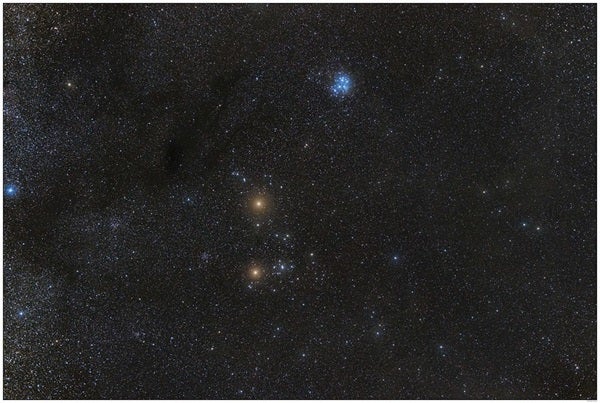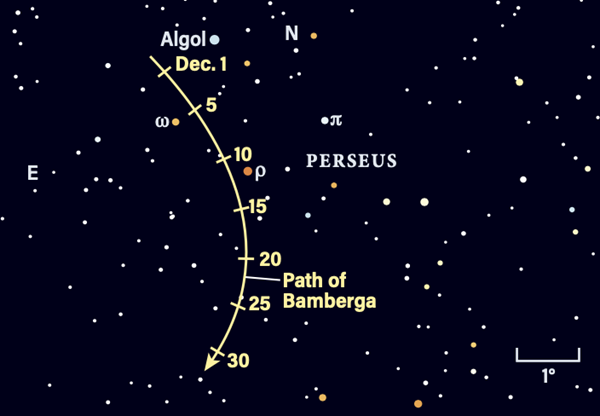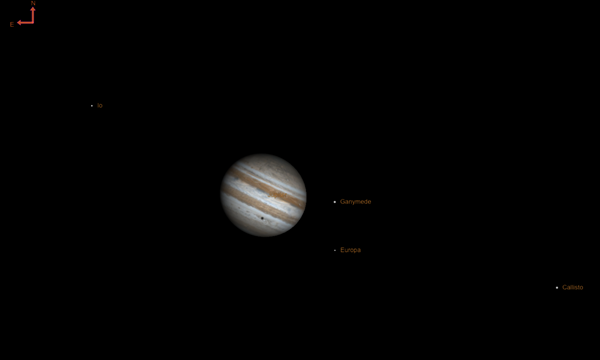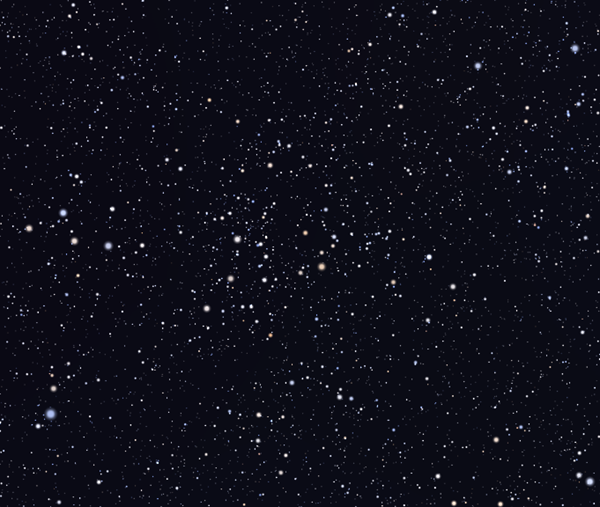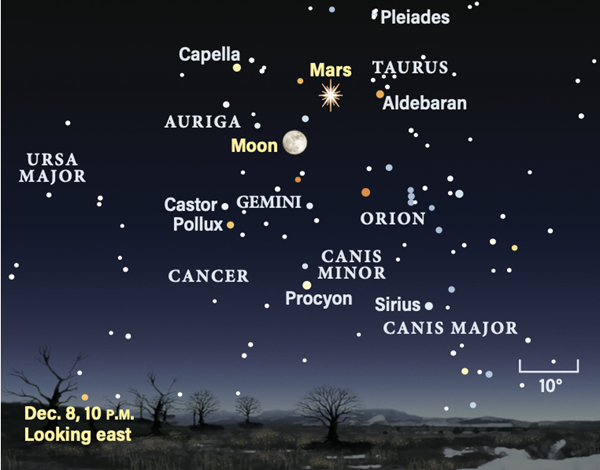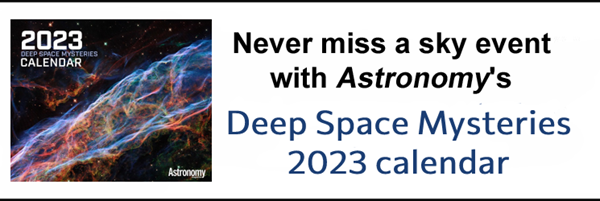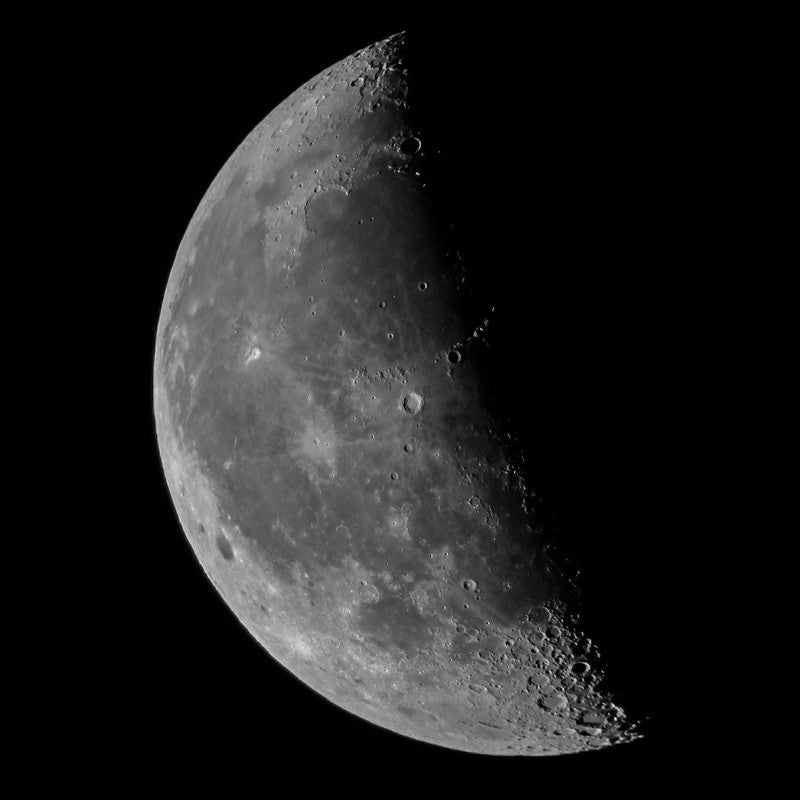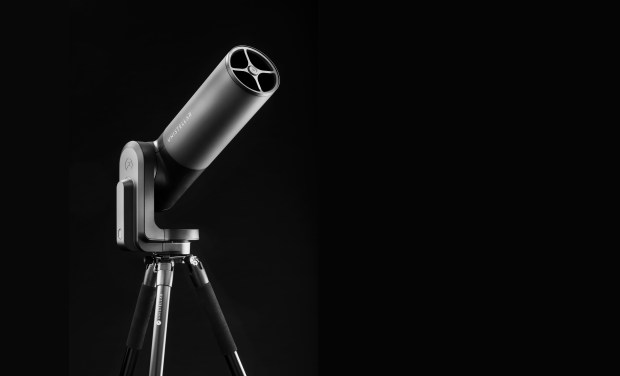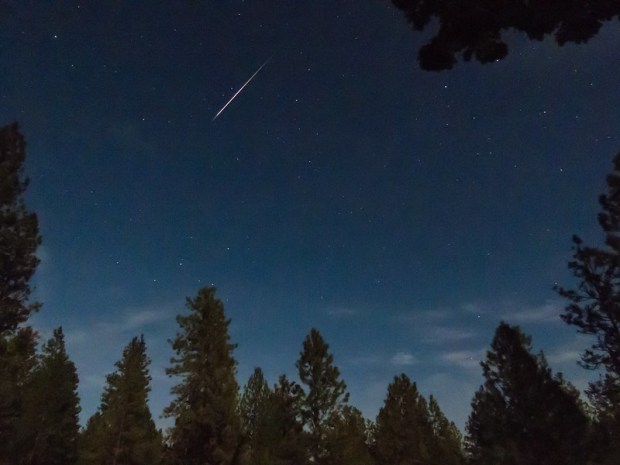Friday, December 2
The great dragon Draco curls around the small figure of Ursa Minor in the north. Tonight, let’s visit the eighth-largest constellation to view magnitude 10 M102, also called the Spindle Galaxy.
Located in the southwestern portion of Draco, you’ll find M102 just 4° southwest of 3rd-magnitude Iota (ι) Draconis. The galaxy, which appears edge-on from our point of view on Earth, stretches about 5′ by 2′, meaning it’s just over twice as long as it is wide. This long, thin appearance, including the bulge of stars visible in the middle, is what garnered it the name of “Spindle.” With a large scope, you may even spot the dark dust lane running through its center, further enhancing its resemblance to the earthly object.
Backyard observers can easily spot M102 using averted vision through a small scope. But with a waxing Moon in the sky, you might want to go for the biggest aperture you can to make the task a bit easier.
Sunrise: 7:04 A.M.
Sunset: 4:35 P.M.
Moonrise: 1:48 P.M.
Moonset: 1:17 A.M.
Moon Phase: Waxing gibbous (73%)
*Times for sunrise, sunset, moonrise, and moonset are given in local time from 40° N 90° W. The Moon’s illumination is given at 12 P.M. local time from the same location.
Saturday, December 3
Asteroid 324 Bamberga steals the spotlight this month with a path that takes it near Algol, the Demon Star. Already some 50° high in the east an hour after sunset, 2nd-magnitude Algol is an eclipsing binary star that grows dimmer as its unseen companion passes in front of it and brighter as its circling orbit moves it away once more. Every 2 days, 20 hours, and 49 minutes, Algol drops from magnitude 2.1 to 3.4 when such an eclipse occurs.
Tonight, Bamberga — glowing at magnitude 9.4 — lies just 1° southeast of Algol. The asteroid is brightest early in the month, fading to around magnitude 10 by the end of December. You should be able to spot it with binoculars or a small scope. The large main-belt world stays close to the Demon Star all month as well, while the nearby Moon will slide on by over the next several days, leaving darker skies in its wake. Plus, Bamberga will pass near several background stars a bit later this month, so we’ll likely return to it on a night when you may be able to notice its shift across the sky in just a few hours.
Coming back in a few days might also reveal that Algol has dimmed or brightened relative to how it appears tonight!
Sunrise: 7:05 A.M.
Sunset: 4:35 P.M.
Moonrise: 2:11 P.M.
Moonset: 2:23 A.M.
Moon Phase: Waxing gibbous (81%)
Sunday, December 4
Neptune stands still against the background stars of far northeastern Aquarius at 5 A.M. EST; after this, the distant planet will begin moving eastward toward the border of Aquarius and Pisces.
The ice giant is not visible early in the morning, but instead you can find it in the south as soon as darkness falls. At magnitude 7.9, you’ll need at least binoculars to see it; conveniently, there are two relatively bright signposts to guide you. Right now, Neptune lies roughly halfway between magnitude –2.6 Jupiter in Pisces and magnitude 4.2 Phi (ϕ) Aquarii. Once you zoom in on that position, you’ll see Neptune sits inside the center of a triangle of three 7th-magnitude stars.
As long as you’re in this region of the sky, turn a telescope on Jupiter to catch Europa’s shadow making its way from east to west across the disk (visible in twilight or darkness for those in the central and eastern U.S.). Just off Jupiter’s western limb, Europa itself slides due south of Ganymede around 6:45 P.M. EST; the moon’s shadow moves off the jovian disk just under an hour later. And shortly after 8 P.M. EST, Ganymede — which has been approaching the limb over the last few hours — disappears behind the giant planet.
Sunrise: 7:06 A.M.
Sunset: 4:35 P.M.
Moonrise: 2:34 P.M.
Moonset: 3:29 A.M.
Moon Phase: Waxing gibbous (89%)
Monday, December 5
The Moon passes 0.5° north of Uranus at 1 P.M. EST. By sunset, they are just over 3° apart in southeastern Aries. Wait for the sky to darken, then look to the Moon’s upper right (west-southwest) with binoculars to see if you can make out magnitude 5.7 Uranus. This observation may be challenging, given the bright, nearly Full Moon so nearby. If you can spot the distant planet, its 4″-wide disk will appear like a “flat” gray star.
Much easier to observe tonight, even with the light of the Moon, is the Pleiades. This stunning star cluster stands about 11.5° northeast of our satellite in the sky and is a wonderful target for binoculars or low-powered scopes — or even your finder scope. In fact, the Pleiades is not great to look at under higher powers, as the smaller field of view cuts out many of this young cluster’s stars. One of the closest open clusters to Earth, this grouping of stars is easily visible to the naked eye and its rising time at certain points in the year was often used to mark the changing of ancient seasons.
Sunrise: 7:07 A.M.
Sunset: 4:34 P.M.
Moonrise: 3:01 P.M.
Moonset: 4:35 A.M.
Moon Phase: Waxing gibbous (94%)
Tuesday, December 6
Early-morning observers will easily spot the brightest star in the sky, Sirius, sinking in the southwest a few hours before dawn. Typically drawn depicting the nose of the Big Dog, Canis Major, Sirius is a blazingly bright A-type star with a tiny white dwarf companion, often called the Pup.
Canis Major itself is home to numerous deep-sky objects, from galaxies to star clusters. We’ll focus in on the latter this morning, as the bright Moon makes galaxies harder to see.
NGC 2354 is located just 1.5° east-northeast of 2nd-magnitude Delta (δ) Canis Majoris in the back half of the dog. With an integrated magnitude of 6.5, even a small scope (4 inches or so) should show a nice view with several dozen stars. If you can bump up your aperture, you’ll bring out more suns. The cluster appears quite large, spanning 20′ in diameter, with an oval-shaped dark void stretching from north to south near the center.
Sunrise: 7:08 A.M.
Sunset: 4:34 P.M.
Moonrise: 3:32 P.M.
Moonset: 5:41 A.M.
Moon Phase: Waxing gibbous (98%)
Wednesday, December 7
The Moon passes 0.5° north of Mars at 11 P.M. EST, just minutes before our satellite’s phase reaches Full at 11:08 P.M. EST. You’ll find the pair high in the southern sky at that time, nestled among the stars of Taurus the Bull and about 7° southwest of Elnath, which sits at the tip of one of Taurus’ two horns.
A few hours earlier, though, most locations in the U.S. (with the exception of the East and Gulf coasts) will see the Moon occult, or pass in front of, Mars. In the central U.S., the planet slips out of view behind the Moon around 9 P.M. CST, reappearing roughly 60 minutes later. You can find the exact times of the event’s start and end from your location at www.lunar-occultations.com/iota/planets/1208mars.htm.
The December Full Moon is also called the Cold Moon. Because of its path through the sky at this time of year, it will remain above the horizon from around 4 P.M. this afternoon until nearly 8 A.M. tomorrow morning. (Note the moonset time listed for today is the time the Moon sets early this morning after rising in the afternoon on the 6th).
As the last Full Moon of the year, you’ll want to get out and check it out — and also note Mars’ location so nearby. The Red Planet finally reaches opposition tomorrow morning, so we’ll be back here in just a few hours (or simply stick around overnight!) to enjoy the Red Planet at its peak for the year.
Sunrise: 7:09 A.M.
Sunset: 4:34 P.M.
Moonrise: 4:07 P.M.
Moonset: 6:45 A.M.
Moon Phase: Full
Thursday, December 8
Mars is now at its best! The Red Planet reaches opposition at 1 A.M. EST, located high overhead in the southwest. The Moon has inched farther away, now nearly 1.5° from Mars after coming close to — or passing in front of, depending on your location — the planet last night.
Mighty Mars is now 17″ across and shows off some of its largest geological features through a telescope. Around midnight, Mare Cimmerium and Mare Elysium should appear roughly central on the disk. Look also for a darker region, called the north polar hood, over the planet’s north pole as its northern winter draws to an end. As December progresses, this feature should slowly eke away, leaving the brighter polar cap more easily visible.
Because it is at opposition, Mars is visible from sunset until sunrise. So, if you’re not an early riser, don’t worry — you can still catch Mars looking fantastic this evening after dark, when the Moon has also moved along the ecliptic to just past the tips of Taurus’ horns, leaving the background sky around the planet just a little darker as well.
Sunrise: 7:09 A.M.
Sunset: 4:34 P.M.
Moonrise: 4:49 P.M.
Moonset: 7:47 A.M.
Moon Phase: Full
Friday, December 9
How clear is your southwestern horizon? If the answer is “very,” step outside just after sunset tonight to see if you can spot Venus and Mercury close to the horizon 30 minutes after the Sun disappears. Despite its low altitude (2°), Venus should actually be pretty easy to find — it’s magnitude –3.9. It sits slightly lower and to the right of Mercury, which is fainter (magnitude –0.6) but slightly higher (nearly 4° up). You may need binoculars to bring out the solar system’s smallest planet against the darkening sky, though you do have a bit longer for the background light to fade a little more before it sets.
Through a telescope, Venus spans 10″ and is nearly full at 98 percent lit. By contrast, Mercury is half that wide — 5″ across — and 86 percent lit. If this low altitude is too challenging, never fear — the planets’ visibility will increase throughout the month and they’ll put on a wonderful show together with the Moon on Christmas Eve.
Sunrise: 7:10 A.M.
Sunset: 4:34 P.M.
Moonrise: 5:38 P.M.
Moonset: 8:44 A.M.
Moon Phase: Waning gibbous (98%)

